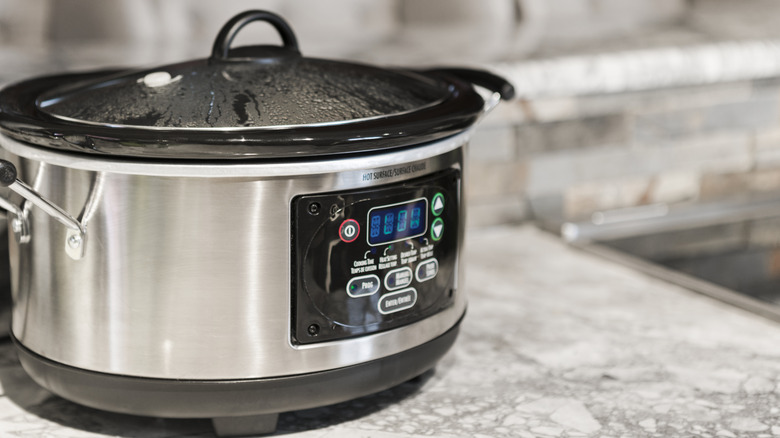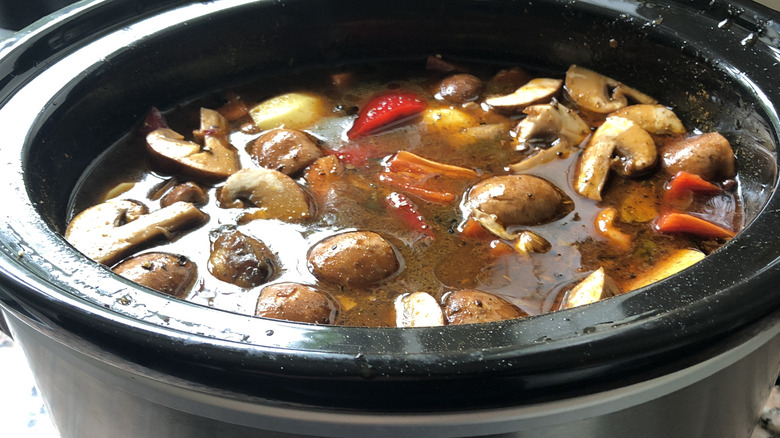The Slow Cooker Mistake That Can Make Your Food Unsafe To Eat
A crock pot is certainly a useful appliance. It allows us to make everything from slow-cooked meatloaf to DIY yogurt without much hands-on effort. For this reason, slow cooker recipes are often celebrated as a way of making sure your food is ready for you when you come home from work. However, the problem is that many of these recipes call for a maximum cooking time of eight hours. Unless you live right next to where you work, this doesn't fit with most peoples' working day. Sure, many slow cookers will automatically switch to a "keep warm" setting once the cooking time is over, but it's best not to rely on this setting for too long.
The problem with the "keep warm" setting is that it's designed to do just that: keep food warm. For this reason, it holds food steady at a fairly low 140 degrees Fahrenheit. According to the United States Department of Agriculture, this temperature is still considered to be in the "danger zone," meaning it's not hot enough to prevent bacteria from growing rapidly. The organization cautions that any food kept between 90 and 140 degrees Fahrenheit needs to be refrigerated after one hour in order to ensure it is safe to eat. If you work an eight-hour shift and have a lunch break and a relatively long commute, the food in your eight-hour slow cooker recipe will be sitting in the danger zone for far longer than the USDA advises. This means it may no longer be safe to eat.
How to commute-proof your slow cooker recipes
Trying to find slow cooker recipes that actually account for a normal workday complete with traffic, last-minute phone calls, and any other possible delays can be frustrating. A surprising number, in fact, call for a dish to be cooked in just four or five hours — what's up with that? Fortunately, there are workarounds for those of us who have to leave the house and work for an entire day. Chief among them is to tack on a few extra hours of cooking. According to people who've tried it, adding an extra couple of cooking hours doesn't harm most crock pot meals; some meat dishes, in particular, may actually improve thanks to the extra cooking time. More importantly, adding these hours will ensure your food is not kept in the danger zone.
For recipes that require some hands-on work at the end, including those that call for cheese to be added during the last hour of slow cooking, you can always extend the cooking time even further. This should ensure that, once back from work, you have enough time to add that ingredient before the meal finishes cooking.

